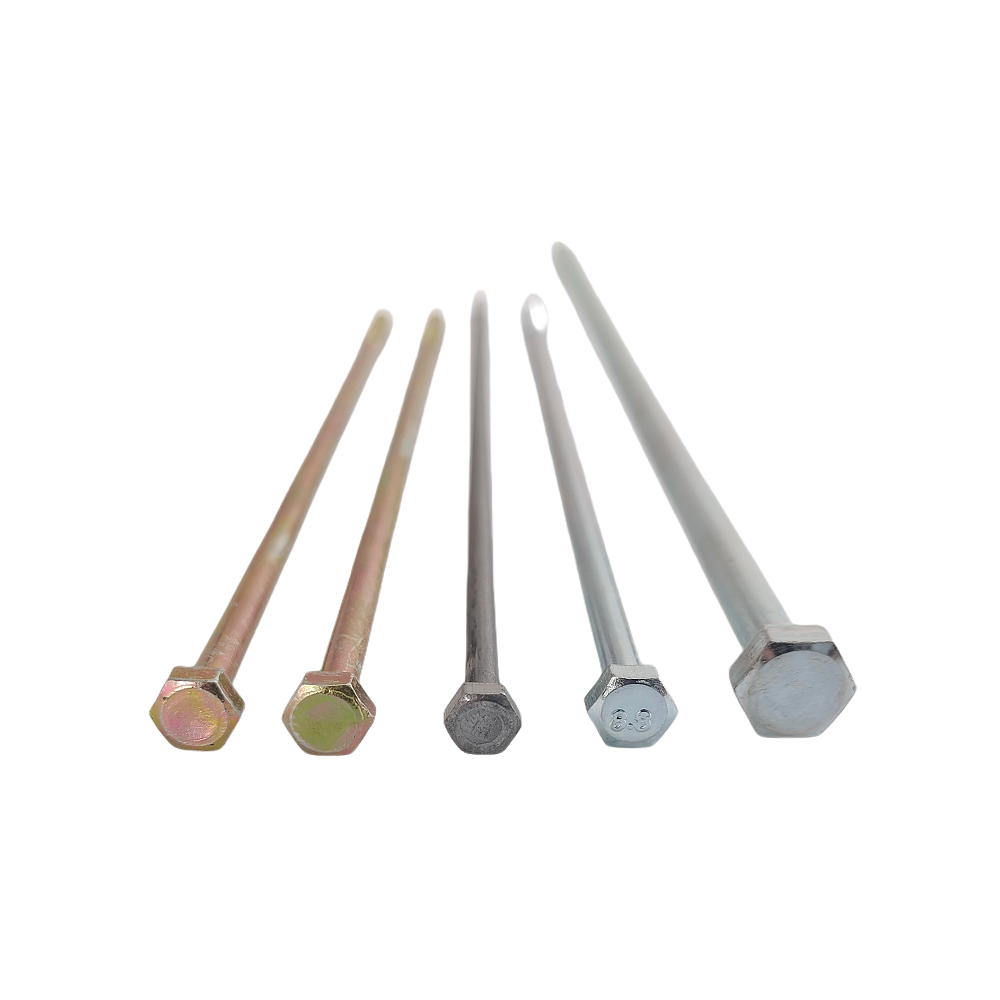Release time:2020-01-16 18:44 Browse:

Lengthening screws, as a special form of fasteners, play an irreplaceable role in complex or deep connection scenes due to their unique design. Its working principle, simply put, is to achieve the purpose of solid connection through the interaction of the friction of the thread and the locking force of the nut. Below, we will analyze its working principle in detail from the structure of the extension screw, the role of the thread, the function of the nut and the entire fastening process.
### Lengthening screw structure
Compared with ordinary screws, the most significant feature of lengthening screws is the "lengthening" screw part. This design not only increases the depth and stability of the connection, but also broadens its usage scenarios. The screw, as the main part of the lengthening screw, its length directly determines the penetration ability and connection depth of the screw. In complex or deep structures such as Bridges, high-rise buildings, heavy machinery, ordinary screws are often unable to meet the connection needs due to insufficient length, at this time, lengthening screws have become an indispensable choice.
In addition, the material of the screw is also a key factor in determining its strength and durability. Common screw materials include stainless steel, carbon steel, alloy steel, etc., each material has its own unique performance advantages. For example, stainless steel screws are widely used in outdoor and humid environments because of their excellent corrosion resistance; Carbon steel screw, with its high strength and good processing properties, has become the first choice in many industrial fields. The selection of these materials not only improves the bearing capacity of the extension screw, but also prolongs its service life.
### Action of thread
Thread, as one of the core design of lengthening screws, its shape, size and accuracy directly determine the tightness and tightness of the connection. The design of the thread follows strict mathematical principles, and through the spiral upward line, the tight bite between the screw and the nut is achieved. When the nuts are rotated and tightened, the friction between the threads gradually increases, resulting in a strong fastening force that ensures that the connecting parts do not loosen or fall off.
Specifically, the friction of threads is an important part of the thread locking principle. When two threaded parts are connected together, due to the presence of the bevel of the thread, when external forces act on the thread, friction between the bevel will be generated. This friction prevents the relative sliding of the threads, thus maintaining the stability of the connection. The amount of friction depends on the friction coefficient of the thread and the force situation, usually, the greater the friction, the stronger the connection.
In addition to the fastening function, the thread also has a certain sealing function. In cases where liquid or gas leakage needs to be prevented, such as pipeline connections, pressure vessels, etc., the special sealing thread design can effectively prevent media leakage and ensure the safe operation of the system. In addition, with the advancement of technology, some new screw thread designs have also incorporated self-locking, anti-loosening and other characteristics, further improving the reliability and stability of the connection.
### Function of nuts
Nut, as the terminator of the lengthening screw, its main function is to lock the screw and prevent it from loosening. Nuts come in a variety of designs, from simple hex nuts to complex locking nuts, each designed to improve the tightening and safety of the connection. For example, the locking nut can be automatically locked after tightening through a special internal locking mechanism, effectively preventing loosening caused by vibration or impact.
In addition to the locking function, nuts also play a decorative role. In some occasions with aesthetic requirements, such as home decoration, art production, etc., the appearance design of nuts has also been given more creativity and imagination. Delicate lines, bright colors, unique shapes... These design elements not only enhance the overall beauty of the product, but also meet the needs of users for personalized.
### Fastening process
When the screw is fully embedded and penetrates all the connected parts, the nut can be tightened. This step is key to ensuring a strong connection. In the fastening process, the following points need to be noted:
1. ** Choose the right tool ** : According to the size and type of nuts, choose the right wrench or power tool to tighten. The right tool can ensure that the tightening force is uniform and accurate, avoiding damage to the nut or screw.
2. ** Apply appropriate preloading force ** : When tightening for the first time, appropriate preloading force should be applied to produce a certain friction between the connected parts and improve the reliability of the connection. The size of the preload should be determined according to the specific engineering requirements and connection conditions to ensure the fastness and safety of the connection.
3. ** Use of locking agent ** : In special environments, such as large vibration occasions, you can consider applying an appropriate amount of locking agent at the thread to enhance the stability of the connection. The locking agent can fill the small gap between the threads to form a strong bonding layer and prevent the threads from loosening.
4. ** Regular inspection ** : For equipment or structures used for a long time, the fastening state of the screws should be regularly checked, and the loosening problem should be found and dealt with in time. Regular inspection can ensure the stability and security of the connection to avoid accidents caused by loosening.
5. ** Safe operation ** : During the entire assembly process, be sure to observe the safe operation procedures and wear the necessary protective equipment to avoid injury. Safe operation is the premise and guarantee to ensure the smooth progress of work.
To sum up, the working principle of the extension screw is to achieve the purpose of firm connection through the interaction of the friction of the thread and the locking force of the nut. Its unique structural design, excellent material selection and scientific fastening process together constitute the core competitiveness of this fastener. In practical applications, we need to select the appropriate extension screw and its supporting tools and methods according to the specific engineering requirements and connection conditions to ensure the fastness and reliability of the connection.
# Lengthening screws # Lengthening bolts # Lengthening outer hex screws # Lengthening inner hex screws # fasteners

